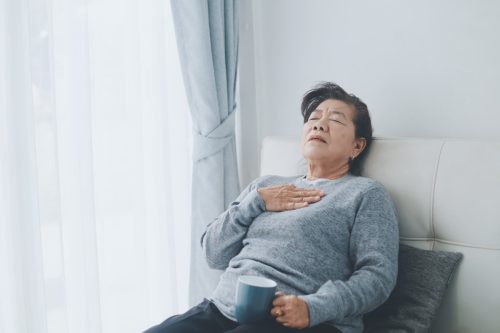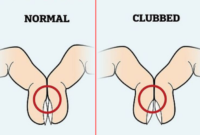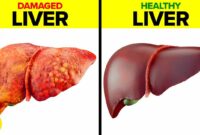LOOK OUT FOR THIS IN THE EVENING AND MORNING—IT COULD BE THE SIGN OF A CARDIAC EVENT TO COME.
food news, cooking, COOKING,HEALTHY EATING,RECIPES,NUTRITION,FOOD INDUSTRY,FOOD SECURITY,FOODIES,FOOD & DINING,FOOD (UK),FOOD (CANADA),FOOD (INDIA),FAST FOOD,FOOD SAFETY,FOOD TRUCKS,FOOD (AUSTRALIA),FOOD SCIENCE,FOOD BANKS,EATING,AGRICULTURE,RESTAURANTS,LOCAL FOOD MOVEMENT,VEGETABLES,HEALTHY RECIPES,FASHION,FASHION (INDIA),FASHION DESIGN,FASHION TRENDS,FASHION SHOWS,FASHION WEEK,FASHION (AUSTRALIA),FASHION (CANADA),GUCCI,STYLE (UK),FASHION MODELING,CLOTHING,FOOTWEAR,CELEBRITY STYLE,LOUIS VUITTON,FASHION HOUSE,ECO FASHION,FASHION PHOTOGRAPHY,MEN’S FASHION,TRENDS,STREET STYLE,SHOES,HAUTE COUTURE,BEAUTY,MAKEUP,MASCARA,LIPSTICK,HAIR,SKIN CARE,HAIR CARE,BEAUTY (AUSTRALIA),BEAUTY TRENDS,SHAMPOO,MOISTURIZERS,FRAGRANCE,PERFUME,HAIRSTYLING,NAILS,BEAUTY PAGEANTS,BEAUTY AND THE BEAST,EYE MAKEUP,FASHION (CANADA),VITAMINS,FASHION TRENDS,NATURAL BEAUTY,VITAMIN, Life Sciences, Biology, Health, Technology, Environmental Science, Space Science, Space, Environment, Genetics, Travel, Food & Dining, Food, Cooking, Fashion, Recipes, Lifestyle (India), Asia, India, Lifestyle, Health, Science, Food, The Brain, Health Care, Healthy Eating, Women, Women’s Health, Food & Dining, Depression, Aging, Cool Stuff, Beauty, Motivation, Self-Improvement, Innovation, Culture, Energy, Education, Kids, Parenting, Love, Happiness, Relationships, Meditation, Mindfulness, Sleep, Yoga, Spirituality, News, Politics, Love, Friendships, Management, Leaderships, Productivity, Business, Fashion, Celebrity News, Fashion Trends, Health, Science, Food, The Brain, Health Care,HEALTH CARE, HEALTH (INDIA), FOOD (INDIA), MEDICINE, ALTERNATIVE MEDICINE, VITAMINS, FAST FOOD, FOOD SCIENCE, FOOD SECURITY, FOOD INDUSTRY, FOOD (CANADA), MEAT, FOOD (AUSTRALIA), FOOD SAFETY, VEGETARIANISM, OLIVE OIL, HEALTH CARE (AUSTRALIA), HEALTH (INDIA), HEALTH CARE TECHNOLOGY, HEALTH INSURANCE, HEALTH CARE (CANADA), HEALTH CARE (INDIA), PUBLIC HEALTH, HEALTHY LIVING, WORLD HEALTH ORGANIZATION, HEART DISEASE, MEDICAL TECHNOLOGY, EHEALTH, HEALTH CARE LAW, DIABETES, HEALTH CARE, HEALTH (INDIA, FOOD (INDIA), MEDICINE, ALTERNATIVE MEDICINE, VITAMINS, FAST FOOD, FOOD SCIENCE, FOOD SECURITY, FOOD INDUSTRY, FOOD (CANADA), MEAT, FOOD (AUSTRALIA), FOOD SAFETY, VEGETARIANISM, OLIVE OIL, HEALTH CARE (AUSTRALIA), HEALTH (INDIA), HEALTH CARE TECHNOLOGY, HEALTH INSURANCE, HEALTH CARE (CANADA), HEALTH CARE (INDIA), PUBLIC HEALTH, HEALTHY LIVING, WORLD HEALTH ORGANIZATION, HEART DISEASE, MEDICAL TECHNOLOGY, EHEALTH, HEALTH CARE LAW, DIABETES,beauty, make up, skin care, mascare, moisturizers, lipstick, hairstyling, beauty trends, hair care, shampo, hair, beauty (australia), parfume, beauty and the beast, beauty pageants, nautural beauty, nails, eye makeup, fashion (canada), dermatology, ulta beauty, collagen, acne, vitamins, vitamin a, vitamin b, vitamoin c, vitamin d, vitamin e, food news, cooking, COOKING,HEALTHY EATING,RECIPES,NUTRITION,FOOD INDUSTRY,FOOD SECURITY,FOODIES,FOOD & DINING,FOOD (UK),FOOD (CANADA),FOOD (INDIA),FAST FOOD,FOOD SAFETY,FOOD TRUCKS,FOOD (AUSTRALIA),FOOD SCIENCE,FOOD BANKS,EATING,AGRICULTURE,RESTAURANTS,LOCAL FOOD MOVEMENT,VEGETABLES,HEALTHY RECIPES,FASHION,FASHION (INDIA),FASHION DESIGN,FASHION TRENDS,FASHION SHOWS,FASHION WEEK,FASHION (AUSTRALIA),FASHION (CANADA),GUCCI,STYLE (UK),FASHION MODELING,CLOTHING,FOOTWEAR,CELEBRITY STYLE,LOUIS VUITTON,FASHION HOUSE,ECO FASHION,FASHION PHOTOGRAPHY,MEN’S FASHION,TRENDS,STREET STYLE,SHOES,HAUTE COUTURE,BEAUTY,MAKEUP,MASCARA,LIPSTICK,HAIR,SKIN CARE,HAIR CARE,BEAUTY (AUSTRALIA),BEAUTY TRENDS,SHAMPOO,MOISTURIZERS,FRAGRANCE,PERFUME,HAIRSTYLING,NAILS,BEAUTY PAGEANTS,BEAUTY AND THE BEAST,EYE MAKEUP,FASHION (CANADA),VITAMINS,FASHION TRENDS,NATURAL BEAUTY,VITAMIN
You may think all heart attacks come with chest pain or discomfort in your left arm, but over the years, research has shown that what Hollywood shows you when it comes to a heart attack may not be close to reality. Studies have found that not only are these symptoms not hallmarks for all patients, but women experience different heart attack symptoms than men. And in many cases, red flags can crop up weeks before the actual cardiac event, if you know what to look for. Landmark research from the American Heart Association (AHA) on heart attacks among women found that 95 percent of them develop new symptoms a month prior to the event that go away after their heart attack, and 71 percent share the same subtle symptom. Read on to find out what it is.
Seventy-one percent of women report feeling unexplained fatigue in the weeks before their heart attack.

In 2003, the AHA conducted a survey of more than 500 women who survived heart attacks, the results of which were published in the journal Circulation. Among the 95 percent of participants who said they noticed something wasn’t right in the month or so before their heart attacks, the most common was unexplained fatigue. According to the research, 71 percent of women reported feeling tired for no logical reason in the weeks before their heart attack.
In an article for the Cleveland Clinic, cardiologist Leslie Cho, MD, explains that if your fatigue is new or dramatic, you should consider the possibility of a heart attack. According to Cho, if you are exhausted after your typical workout, if you feel tired while resting, or if something as simple as making the bed wipes you out, you should talk to your doctor.
Half of women also experience sleeplessness prior to a heart attack.

It’s not just unexplained fatigue that could signal a heart attack. If you can’t sleep, that’s another cause for concern. According to the AHA survey, almost half—48 percent—of women who survived a heart attack said they experienced sleep disturbance up to a month before the event.
heart failure in 20s,widow maker artery blockage,myocardial infarction and heart failure,signs and symptoms of heart attack in women,angina jaw pain,most common symptoms of myocardial infarction,mi symptoms in women,heart attacks in the elderly prognosis,symptoms of acute myocardial infarction,heartache symptoms in males,silent heart attack symptoms,mini heart attack symptoms,heart attack symptoms in young women,lad widow maker artery,heart attack symptoms men,anterior myocardial infarction symptoms,female heart attack symptoms,heart attack symptoms male,heart attack symptoms in women,womens heart attack symptoms,signs of heart attack in women,mi heart disease,warning signs of heart attack in women,common symptoms of myocardial infarction,heart attack symptoms,silent heart attack signs,signs of mini heart attack,heart attack treatment,minor heart attack symptoms,signs of a heart attack in men,stress heart attack,early heart failure symptoms,stress cause heart attack,early signs of heart attack in women,scad heart,signs and symptoms of heart attack,angina jaw pain only,types of heart attacks caused by stress,signs of a woman having a heart attack,myocardial infarction vital signs,signs and symptoms of mi,stroke and heart attack,signs and symptoms of myocardial infarction,warning signs of heart failure,signs of impending heart failure,minor heart attack,widowmaker blockage,mi attack symptoms,heart attack,diabetes and heart attack,diabetes heart attack,silent heart attack diabetes,myocardial symptoms,early signs of heart attack,shoulder pain and heart attack,myocardial infarction symptoms,infarction myocardial,tachycardia attack,cardiac attack,heart attack age,widow maker artery,signs of a heart attack,hiccups and heart attack,types of heart attacks,signs of female heart attack,atypical chest pain in females,heart attack is,back pain and heart attack,heart attack in men,myocardial infarction symptoms female,different types of heart attacks,anxiety attack chest pain,mild heart attack,coughing and heart attack,heart infarct,heart attack and stroke symptoms,heart attack in women,womens heart attack,cardiovascular attack,chest pain after panic attack,causes of heart attack in women,blood pressure and heart attack,main causes of heart attack,heartache symptoms,indigestion chest pain,indigestion and chest pain,early symptoms of heart disease,symptoms of afib attack,heart failure symptoms in men,first signs of heart problems,chest pain after anxiety attack,signs of afib attack,high blood pressure heart disease,high blood pressure and heart disease,early signs of heart problem,signs of early heart failure,signs that you have a heart problem,back pain and heart disease,heart trouble symptoms,arrhythmia attack
That’s why Cho said if you feel exceptionally tired, but you also experience sleep disturbance, that could be an early indicator of a heart attack.
Less than 1 in 3 women experienced chest pain at the onset of their heart attack.

The survey also found that only 31 percent of women experienced what’s considered the tell-tale heart attack symptom: pain centered high in chest. On top of that, 43 percent reported no chest pain during their heart attacks at all.
“Lack of significant chest pain may be a major reason why women have more unrecognized heart attacks than men or are mistakenly diagnosed and discharged from emergency departments,” researcher Jean C. McSweeney, PhD, RN, a professor at the University of Arkansas for Medical Sciences, said in a statement at the time. “Many clinicians still consider chest pain as the primary symptom of a heart attack.”
The most common symptom among women having a heart attack is shortness of breath.

While unexplained fatigue is the most common early sign of a heart attack, according to the AHA research, women are more likely to report experiencing shortness of breath than any other symptom once their heart attack begins. Fifty-eight percent of respondents experienced the symptom during their heart attack, while 42 felt it in the weeks leading up to the cardiac event.
That’s why the AHA says that if you’re experiencing shortness of breath, with or without chest pain, you should call 911 and head to a hospital ASAP.
Nieca Goldberg, MD, medical director for the Joan H. Tisch Center for Women’s Health at NYU’s Langone Medical Center, told the AHA that women tend to chalk up their heart attack symptoms to less life-threatening conditions like acid reflux or the flu. “There are still many women who are shocked that they could be having a heart attack,” Goldberg said.
heart failure in 20s,widow maker artery blockage,myocardial infarction and heart failure,signs and symptoms of heart attack in women,angina jaw pain,most common symptoms of myocardial infarction,mi symptoms in women,heart attacks in the elderly prognosis,symptoms of acute myocardial infarction,heartache symptoms in males,silent heart attack symptoms,mini heart attack symptoms,heart attack symptoms in young women,lad widow maker artery,heart attack symptoms men,anterior myocardial infarction symptoms,female heart attack symptoms,heart attack symptoms male,heart attack symptoms in women,womens heart attack symptoms,signs of heart attack in women,mi heart disease,warning signs of heart attack in women,common symptoms of myocardial infarction,heart attack symptoms,silent heart attack signs,signs of mini heart attack,heart attack treatment,minor heart attack symptoms,signs of a heart attack in men,stress heart attack,early heart failure symptoms,stress cause heart attack,early signs of heart attack in women,scad heart,signs and symptoms of heart attack,angina jaw pain only,types of heart attacks caused by stress,signs of a woman having a heart attack,myocardial infarction vital signs,signs and symptoms of mi,stroke and heart attack,signs and symptoms of myocardial infarction,warning signs of heart failure,signs of impending heart failure,minor heart attack,widowmaker blockage,mi attack symptoms,heart attack,diabetes and heart attack,diabetes heart attack,silent heart attack diabetes,myocardial symptoms,early signs of heart attack,shoulder pain and heart attack,myocardial infarction symptoms,infarction myocardial,tachycardia attack,cardiac attack,heart attack age,widow maker artery,signs of a heart attack,hiccups and heart attack,types of heart attacks,signs of female heart attack,atypical chest pain in females,heart attack is,back pain and heart attack,heart attack in men,myocardial infarction symptoms female,different types of heart attacks,anxiety attack chest pain,mild heart attack,coughing and heart attack,heart infarct,heart attack and stroke symptoms,heart attack in women,womens heart attack,cardiovascular attack,chest pain after panic attack,causes of heart attack in women,blood pressure and heart attack,main causes of heart attack,heartache symptoms,indigestion chest pain,indigestion and chest pain,early symptoms of heart disease,symptoms of afib attack,heart failure symptoms in men,first signs of heart problems,chest pain after anxiety attack,signs of afib attack,high blood pressure heart disease,high blood pressure and heart disease,early signs of heart problem,signs of early heart failure,signs that you have a heart problem,back pain and heart disease,heart trouble symptoms,arrhythmia attack



